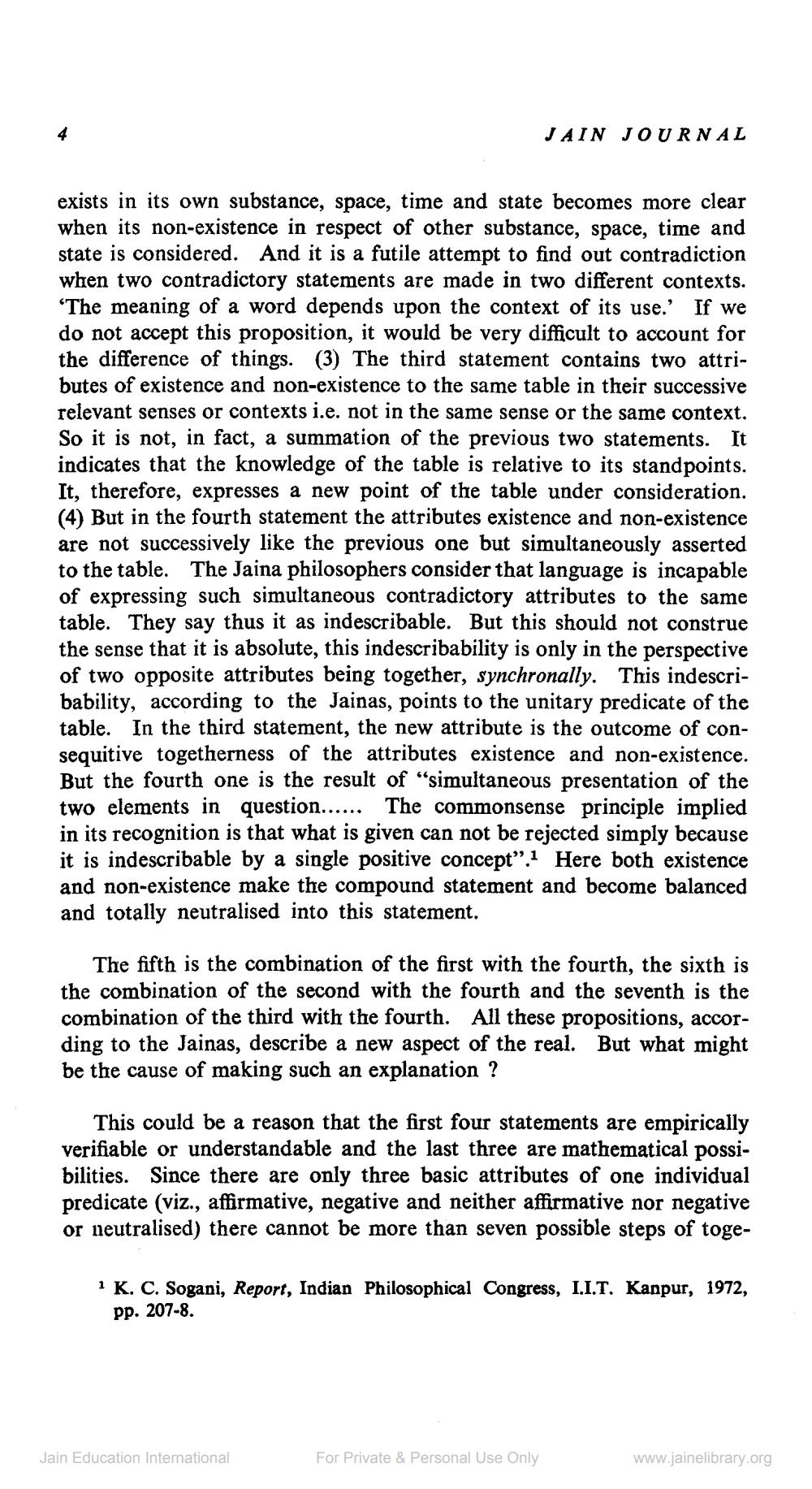Book Title: Jain Journal 1985 07 Author(s): Jain Bhawan Publication Publisher: Jain Bhawan Publication View full book textPage 9
________________ exists in its own substance, space, time and state becomes more clear when its non-existence in respect of other substance, space, time and state is considered. And it is a futile attempt to find out contradiction when two contradictory statements are made in two different contexts. 'The meaning of a word depends upon the context of its use.' If we do not accept this proposition, it would be very difficult to account for the difference of things. (3) The third statement contains two attributes of existence and non-existence to the same table in their successive relevant senses or contexts i.e. not in the same sense or the same context. So it is not, in fact, a summation of the previous two statements. It indicates that the knowledge of the table is relative to its standpoints. It, therefore, expresses a new point of the table under consideration. (4) But in the fourth statement the attributes existence and non-existence are not successively like the previous one but simultaneously asserted to the table. The Jaina philosophers consider that language is incapable of expressing such simultaneous contradictory attributes to the same table. They say thus it as indescribable. But this should not construe the sense that it is absolute, this indescribability is only in the perspective of two opposite attributes being together, synchronally. This indescribability, according to the Jainas, points to the unitary predicate of the table. In the third statement, the new attribute is the outcome of consequitive togetherness of the attributes existence and non-existence. But the fourth one is the result of "simultaneous presentation of the two elements in question...... The commonsense principle implied in its recognition is that what is given can not be rejected simply because it is indescribable by a single positive concept".1 Here both existence and non-existence make the compound statement and become balanced and totally neutralised into this statement. JAIN JOURNAL The fifth is the combination of the first with the fourth, the sixth is the combination of the second with the fourth and the seventh is the combination of the third with the fourth. All these propositions, according to the Jainas, describe a new aspect of the real. But what might be the cause of making such an explanation ? This could be a reason that the first four statements are empirically verifiable or understandable and the last three are mathematical possibilities. Since there are only three basic attributes of one individual predicate (viz., affirmative, negative and neither affirmative nor negative or neutralised) there cannot be more than seven possible steps of toge 1 K. C. Sogani, Report, Indian Philosophical Congress, I.I.T. Kanpur, 1972, pp. 207-8. Jain Education International For Private & Personal Use Only www.jainelibrary.orgPage Navigation
1 ... 7 8 9 10 11 12 13 14 15 16 17 18 19 20 21 22 23 24 25 26 27 28 29 30 31 32 33 34 35 36
